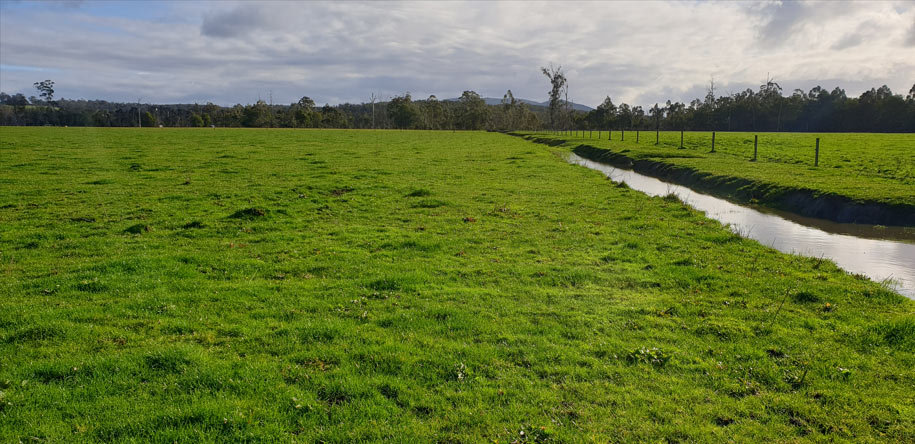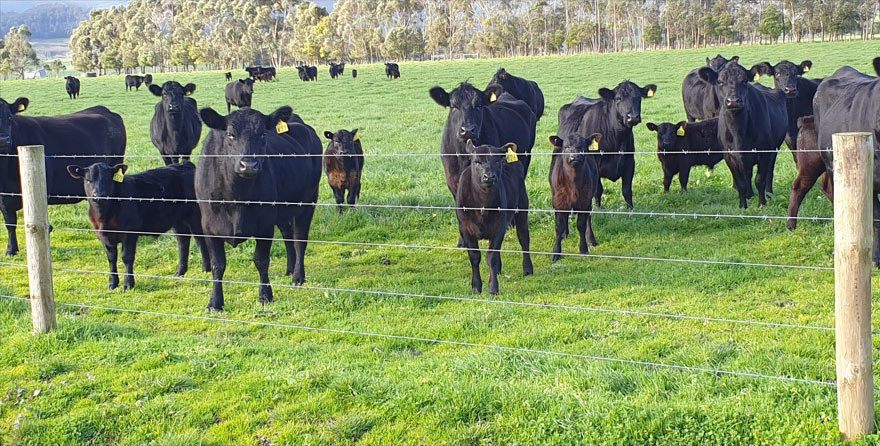The Netherlands
August 12, 2022

West Gippsland can be a pretty wet place in the depths of winter.
With an annual rainfall of around 900mm, waterlogging and pugging can be a real challenge.
Tim Wilson, a beef producer at Labertouche faces the challenges of wet conditions every winter and needs to be mindful of how he manages his 1,200 head Angus herd to minimise the damage that comes from so many feet.
A supplier to the Coles Graze and Greenham’s Never Ever programs, Tim strives for grass fed Angus steers in the order of 560-600kgs with higher intramuscular fat and larger eye muscle area to attain the higher beef premiums. Beyond grazing, the cattle are supplemented with silage and hay, grown on site.
The property had single ownership for 36 years, but with the husband passing away, Tim came on as farm manager, and later buying the property in an arrangement that was viable for him and the previous owner. In those 30 years, the property had been well managed, and had a continuous history of genetic development for the Angus herd. Tim’s vision is to undertake some much-needed pasture renovation over a period of time, and further develop the herd and beef brand.
In years past, the pasture was based on perennial ryegrass, With time, Tim has moved across to the newer genetics of the same ryegrass that now offers greater yields, winter growth and endophytes that favour animal health.

“The biggest challenge here is mud,” says Tim.
“If the winter is wet, or if it rains continuously for more than a week at a time, it can go to mud and struggles to dry out. As a result, I have to be careful how many animals are in the paddock, and...
“Paddock rotation is very important. I run a group of about 40-50 in a mob that have access to four or five paddocks and rotate them on a 8-10 week program. They graze on grass for a week, with silage and hay for the second week then move them on to their next paddock.
“Some paddocks can be drier than others, so I might run a bigger mob on hay and silage in those paddocks if it does get really wet.”
The hardiness of Impact 2 perennial ryegrass gives Tim winter feed when other varieties are dormant to provide consistent beef to Coles and Greenhams year round. In addition, it allows up to 1,200 round silage bales, and about 600-700 hay bales per season.
As a diploid, it gives excellent tillering in early spring, and its late flowering genetics, give excellent feed quality for most of the year. The NEA2 endophyte is important to Tim from an animal health and welfare perspective as it does not cause staggers or heat stress. African Black beetle causes some pest pressure but is overcome with Impact 2. During the summer months, Tim will also plant a brassica forage crop.
Inputs are kept to a minimum – urea or nitrogen blends are used in late spring to boost silage growth. Inputs during winter are dependent on how wet the paddocks are, as machinery can do just as much damage as cattle.
“What Tim is doing on this property shows that with good grazing management, perennial pastures can provide sufficient feed nearly all year, to provide consistent quality beef to major markets such as Coles and Greenhams,” said Barenbrug research agronomist Damien Adcock.